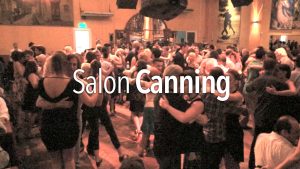Frequently with Argentine Tango we use language that we think is descriptive of what we’re doing but in actual fact is either not that or so far from the mark it is more confusing than anything else.
Before we go any further, it is possible that in reading this that you may not see the issue at all. That you know what the speaker meant, and that’s the important part, right. Wrong. That’s the problem right there. The inference. If you have to infer that X or Y is occurring then there’s far too much ‘wiggle’ room for errors in understanding to crop up. And with regards to Tango where you are attempting to calibrate your body to your thoughts in very precise ways, then you should, by all means necessary, be as precise with your questions, your language, and your descriptives as possible.
One phrase that is ‘tried and true’ for a lot of people is: “On My Balance”.
Stop and think about this phrase for a moment.
There’s really only one possible explanation for this phrase, right ?
Let’s try a little test ? Pick the descriptive that fits that phrase. Ready ? Go!
1.) My equilibrium is perfectly poised.
2.) I am standing upright in a way that is balanced over both feet.
3.) I am sitting, so that my spinal column is supporting me.
4.) I am over one foot and leaning to the side a bit.
5.) I am stable over both of my feet, but I am titling/breaking at the waist.
6.) My feet are firmly planted on the ground and I am tilted slightly forwards (apilado).
Would it surprise you to learn that all of those are correct, and situational ?
They are. 🙂
Truthfully using this ‘tried and true’ phrase has about as much clarity as a small kitchen appliance unplugged. Yes, yes, yes, YOU know what you meant, but does the listener ? Probably not. Not unless you confirm that they are in fact getting the message. And frequently we don’t. Furthermore we continue to use phrases like “Using my core”, or “Pushing into the floor”, or “Give me resistance”. Core ? Core of what ? Your body has several ‘core’ muscles. Do you mean your abs ? your obliques ? your psoas (both) ? Which ones ? And ‘pushing from the floor’ ? Good christ, this phrase is absolutely useless. All muscles pull, we feel the effect of gravity as a ‘push’, but the muscle is pulling, there is no ‘push’. And then we add ‘into the floor’ ? Oy.
At best, this is ‘fuzzy’ language INSTEAD OF describing what’s actually going on.











